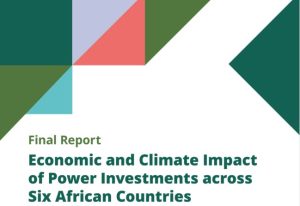Conversation Series: Gender Diversity, Innovation and Impact in the VC Space with Rhea See
Meet Rhea See, Co-Founder and CEO of She Loves Tech, which is the world’s largest startup acceleration platform for women & technology and a global platform that is committed to closing the funding gap for women entrepreneurs. With our work on gender–lens investing and diversity & inclusion, as well as in responsible investment in technology, we were delighted to co-organise a Funder x Founder event with She Loves Tech in April 2024. After the event, Rhea sat down with Pranav Kalra, Senior Consultant and Pauline Brunner, Director Asia at Steward Redqueen to explore the intersection of innovation, gender diversity, and sustainable development in the venture capital space.
Pauline Brunner: What was your motivation to build an ecosystem for women founders through She Loves Tech?
Rhea See: Looking back, two stories motivated me to start She Loves Tech. Back in 2015, I was working at a non-profit foundation, and was seconded to a Private Equity fund. At the fund, I was surrounded by new, pioneer technologies every day. In parallel, my co-founder and I were running the largest women’s professional community in China.
Those three things were juxtaposed: the non-profit and community, was all women, while the fund was all men. At the fund, my boss said, “I don’t invest in women”, meaning that they invest in innovative solutions in general, and he didn’t connect that to women developing those solutions. Meanwhile, there were lots of women in the community who were entrepreneurs, working with technology. Speaking to these women, we realised not only were they experiencing multiple challenges, there was also no platform for them to showcase what they were doing. So, we took this matter to our hands and organised a pitch competition for them to have a stage that they deserved. That turned out to be an overnight success. The massive response we got made it clear that there was a real need for giving women that visibility, to showcase their stories and cases of women innovating.
The second motivation for me is more personal. I just love being immersed in technology and innovation. A part of me can’t help but feel that we’re underutilizing the world’s talent, by dismissing half of the world’s ideas. If we want to solve the world’s greatest challenges, why don’t we all work together? The founders of our program are not just building good businesses – they are out to solve problems and are incredibly passionate about it. Looking at our ~5,000 applicants every year, I would be hard-pressed to find someone who founded a business for the sake of building a tech startup. Even if there’s an opportunistic angle, the problem statement and vision are always very clear.
PB: What kind of challenges does the ecosystem seek to address?
RS: The basic principle is that technology is a tool. Tech is often thought of as a vertical, but increasingly it’s accurately being seen as a horizontal that touches on different industries. As technology becomes more powerful, we want more people to make use of the tool. And since tech becomes more integrated into our lives, how can we leave people behind?
If you talk about the lack of women founders or areas where women are not benefitting from tech, it’s the same problem. Women founders can have an idea with product market fit and a real business problem they’re trying to solve, but they still don’t get funded. Or they will get minimal funding, which may not even last their entire R&D phase. Funding often acts as a barrier to women’s participation in technology development. We can’t expect progress when half of the population is excluded from designing and innovating. Without proper funding, women’s ideas remain just that—ideas.
PB: Why tech? What opportunities do technology companies offer in terms of gender equality and access to market that incumbent business models do not?
RS: Looking at Southeast Asia, the participation of women in the labour force is much higher than average, and this region is mostly run by SMEs where the participation of women is even higher. And don’t forget about the notion of women being super consumers. In Southeast Asia, women control 80% of household spending and reinvest in their communities.
There is therefore a financial opportunity with women as a key consumer segment, but also a real impact opportunity to look at tech through a gender lens: there are many problems in the world right now, big and small, but these problems disproportionately affect women. Technology can’t solve a problem alone – you might need infrastructure or policy to make it work. But technology is scalable, making it powerful. Think of education in remote areas: previously, the only answer was to build schools; now, you can deliver education via the Internet and remote learning.
Talking about gender or social innovation in technology, it’s about taking a gender lens throughout the supply chain. It’s about finding ways to incorporate women into the business model. This also aligns with lessening the unpaid burden on women, who typically take care of families and communities. Developing technology can reduce this burden by creating efficiencies or transforming unpaid work into paid work. For example, one of the startups was offering access to healthcare to rural populations, where there is a lack of tech education, medicine, and healthcare providers. This start-up started training women on basic healthcare as well as digital tools. They then served as the first point of contact for less serious healthcare needs. Women therefore work as agents to help the entire village – work that they might have done regardless. These types of technologies have the power to transform lives and solve challenges, and that’s why I’m doing what I’m doing.
Pranav Kalra: What advice would you share with investors who want to be more gender conscious in their investment approach?
RS: Have more women in your team. It’s not just about bias any more. Everyone has a bias, it’s innate and hard to get rid of, but you can combat that by integrating the right structures and questions into your investment approach. The funds that cannot identify women founders are either insincere or not making the right effort to put in place these structures and to surround themselves with the right opportunities. But that does not mean that women do not exist. We have 5,000 startups join yearly for a reason.
Part of that reason is that we go out of our way to reach our founders where they are. We just did a roadshow across 10 different cities in Pakistan because we’re trying to build a pipeline over time. We go door to door because women don’t always hear about the opportunity. Historically, women have not been in spaces where Venture Capital exists. Tech too, but VC especially. And this brings me back to the importance of team composition: VC deals are not always that formal, there’s a huge portion of a portfolio that you’ve been referred to, or through relationship building. If you are all men, then you are more likely to meet other men and be referred to other men. If you want to invest in more women, you should hire more women.
PK: Rhea, we want to congratulate you on the exciting news about your current transition to become the sole CEO of She Loves Tech. What spurred this decision and what sort of changes can we look forward to following in the future?
RS: At the 10-year mark of She Loves Tech, we want to focus on the long-term sustainability of the organisation. In the last decade, we have developed a lot of programs and products to support our founders, but the real magic happens when the founders speak to each other. We are now building a community platform so the founders can interact with each other.
At the same time, we want to formalise our partnerships and build an alliance of funds that are truly committed to investing in women. Although there are still many people who either think it is unimportant or biased to invest in women, we see it changing: funds now come and work with us because they want to invest in women.
Lastly, we are setting up and fundraising for our own fund, with a targeted first close by end of 2024. We see it as a Y-Combinator inspired accelerator fund, investing in female tech founders. This first one is focused on Southeast Asia, and if it is successful, it can serve as a blueprint that we replicate in different regions.
Our 2030 goal is to catalyse 1 billion in funding for women founders. While this is a big goal, the long-term mission is about building an interconnected ecosystem for women founders. It’s not like we just narrow the funding gap, and everything becomes better.
We’re trying to solve for the now, but we also want to change the game long term. When looking for funding, the structures in play today are venture capital. So we empower women to play the game, by putting them on stage, giving them visibility, not just in media but in front of investors, and equipping them with the skills to position their companies and pitch them more successfully. In the long term, we need new funding solutions that fit different types of founders solving different types of problems. We can’t just have apples and oranges – we need a plethora of fruits to nourish this ecosystem, whether that’s different types of funding or structures. That is our long-term vision.


















